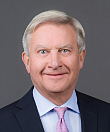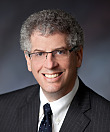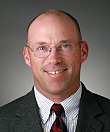12.11.2002
|
Updates
The Securities and Exchange Commission announced on November 25, 2002, its first enforcement actions related to violations of Regulation FD. The SEC imposed cease-and-desist orders on Raytheon Company and its CFO, Siebel Systems, Inc., and Secure Computing Corporation and its CEO. The SEC also fined Siebel $250,000. The SEC issued an investigation report that addressed conduct by Motorola, Inc., but declined to take formal action against Motorola.
At the end of this Update we point out several specific Regulation FD compliance lessons that result from the SEC's actions.
Regulation FD
Regulation FD (fair disclosure) prohibits a public company from selectively disclosing material nonpublic information before publicly disclosing the information. Specifically, a company may not disclose material nonpublic information to market professionals, such as broker-dealers and analysts, or to its security holders if it is reasonably foreseeable that trading by a security holder will occur based on the information. Instead, material information must be broadly disclosed to the public.
To satisfy the public disclosure requirements of Regulation FD, a company must disclose material nonpublic information on Form 8-K or through another method, such as a press release, that will provide broad, nonexclusionary distribution of the information to the public. Conference calls and analyst conferences will comply with Regulation FD if they are accessible to the public through a Webcast or a dial-in number and if the company gives advance public notice of the call or conference. Public companies have widely adopted the practice of pre-announced Webcasts for quarterly earnings announcements.
Summary of SEC Actions
Raytheon Company: Improper Disclosures to Analysts of Quarter-to-Quarter Guidance
In February 2001, Raytheon held an investor conference call available to the public by Webcast. Raytheon reiterated the company's annual earnings guidance but did not provide quarter-to-quarter guidance. Following the call, analysts that covered Raytheon projected first quarter earnings estimates for Raytheon that were higher than the company's internal estimates. Raytheon's CFO reviewed the analysts' models and then initiated one-on-one calls with 11 analysts. Although Raytheon had not publicly provided first quarter earnings guidance, the CFO told the analysts that:
- the company's seasonal distribution of earnings in 2001 would likely mirror the distribution in 2000, and
- only one-third of the company's earnings would be generated in the first half of the year.
The CFO specifically told a few analysts that their first quarter estimates were too high or aggressive. Each analyst contacted by the CFO lowered its first quarter and second quarter estimates and increased its estimates for the second half of the year. Those analysts not contacted by the CFO did not revise their first quarter estimates.
The SEC deemed these disclosures to be material, taking into account that:
- the topic was earnings guidance,
- the CFO reached out to individual analysts, and
- the 11 analysts contacted by the CFO reacted consistently to the disclosures.
Since the disclosures were material and were made selectively to market professionals, the SEC concluded that Raytheon and its CFO had violated Regulation FD.
Lessons From Raytheon:
- Selective disclosure of any earnings guidance information is a recipe for violating Regulation FD.
- Do not privately correct analysts' models for future periods if doing so will reveal nonpublic information.
Siebel Systems, Inc.: The Perils of the Invitation-Only Investor Conference, or "Follow That Script"
During Siebel's public earnings call on October 17, 2001, its CEO stated that the market for information technology products had been soft and was expected to remain so through the end of 2001. On November 5, 2001, the CEO participated in an invitation-only technology conference that Goldman Sachs organized for investment professionals and institutional shareholders. A Goldman Sachs representative told Siebel's director of Investor Relations prior to the conference that a shareholder who held a significant short position in the company's stock would be attending the conference and might purchase additional stock to establish a long position. Goldman Sachs also provided Siebel with a list of questions that its analyst planned to ask the CEO. This list included a question about whether the software market was improving or getting worse. Siebel's IR director prepared a talking points list for the CEO so that he would not disclose material nonpublic information at the conference. This list did not contain a response to the analyst's question regarding the current state of the software market.
By the time of the November 5 Goldman Sachs conference, Siebel's sales were improving and the CEO knew this. At the conference the CEO stated that he was "optimistic" and "seeing a return to normal behavior in IT buying patterns" when asked about the current state of the software market. The CEO mistakenly believed that the conference was being Webcast. The company did not disclose the CEO's statements via press release or Form 8-K, even though the IR director knew that the conference had not been Webcast.
Siebel's stock price and trading volume increased significantly during the conference and increased even more by the time the CEO's statements reached the media later that day. Attendees of the conference also traded in the company's stock immediately following the CEO's presentation, and Goldman Sachs was the most active firm trading the stock on the day of the conference.
According to the SEC, Siebel violated Regulation FD because the conference was not open to the public and the disclosures made by the CEO at the conference were material. The SEC determined the disclosures were material because:
- the disclosures related to trends in the company's business,
- the disclosures contrasted sharply with the public statements made on the company's earnings call, and
- the new disclosures appeared to have prompted trading by attendees at the conference.
Lessons From Siebel:
Companies can avoid the Siebel situation with analyst conferences by:
- prior to the conference, disclosing the new information about material trends on a Form 8-K or in a press release,
- arranging for (and pre-announcing) a Webcast of the company's presentation at the conference, or
- creating a carefully worded script that answers anticipated questions in a way that will not disclose material nonpublic information or notes and declines to answer problematic questions.
Secure Computing Corporation: "Prompt" Disclosure of Unintentional Disclosure Means "Same Day"
The SEC brought an action against Secure Computing and its CEO after the CEO made disclosures about a new significant contract in two one-on-one calls. First, in a March 6, 2002 conference call, the CEO of Secure Computing disclosed to a portfolio manager at an investment advisory firm and a salesperson at a brokerage firm that the company had entered into a significant original equipment manufacturing (OEM) agreement. The CEO mistakenly believed that Secure Computing had publicly disclosed the existence of the OEM agreement. The company's IR director later advised the CEO that the existence of the OEM agreement was not public information. Secure Computing's trading volume and stock price rose significantly following the selective disclosure of the existence of the contract.
Second, on March 7, even as Secure Computing prepared a press release, the CEO again disclosed the existence of the OEM agreement to another portfolio manager. The company issued the press release three hours later, following market close. The company's stock price and trading volume increased throughout that day.
The SEC concluded that the first disclosure of the OEM agreement's existence was not intentional. Regulation FD requires a company to make prompt public disclosure of material nonpublic information where the selective disclosure of that information was unintentional. If Secure Computing had issued a press release on March 6 soon after the disclosure, it presumably would not have been subject to an SEC enforcement action. However, the SEC concluded that the CEO's March 7 disclosure was an intentional disclosure that violated Regulation FD as the CEO made the disclosure knowing that the information was nonpublic and before the company had issued the press release. In the case of intentional selective disclosure of material nonpublic information, Regulation FD requires a company to publicly disclose the information prior to or simultaneous with the selective disclosure. Since Secure Computing's press release was issued three hours after the alleged intentional March 7 disclosure of the agreement, the SEC concluded that the company had violated Regulation FD.
Lessons From Secure Computing:
- Make prompt "same day" public disclosure if material nonpublic information is unintentionally disclosed.
- Publicly disclose material nonpublic information prior to or simultaneous with intentional selective disclosure.
Motorola, Inc.: The Benefits of Good Faith
In February 2001, Motorola stated publicly that the company's first quarter sales and orders were experiencing "significant weakness" and that it likely would not achieve its earnings estimates. Following this disclosure, the company reviewed analysts' models and research notes and concluded that the analysts did not fully appreciate just how bad the first quarter results would be. The company's IR director asked inside legal counsel whether he could contact analysts in private telephone calls and quantify the company's earlier statement. Counsel determined that the investing public already understood the term "significant" and that, in any event, providing a quantitative definition of the term "significant" was not material. Counsel therefore advised the IR director that he could make the calls. The IR director then placed a series of one-on-one telephone calls in March 2001 to analysts and clarified that "significant weakness" meant that the company's sales and orders would drop by at least 25 percent. Motorola's stock price dropped by more than 15 percent, and trading volume in Motorola's stock increased significantly at the firms contacted by the IR director.
The SEC determined that the information provided by the IR director was both material and not generally understood by the investing public, and that Motorola's inside counsel gave incorrect advice. However, the SEC declined to take formal action against Motorola because the company sought and relied upon legal advice before making the selective disclosure. The SEC noted that the legal advice, although erroneous, was given in good faith.
Lesson From Motorola:
- Seek advice and proceed thoughtfully when making a decision on disclosing nonpublic information that could be material.
Practical Lessons From These SEC Enforcement Actions
-
Use Extreme Caution in Private Conversations With Analysts.
Members of senior management need to be particularly cautious during private conversations with analysts, especially when the discussions relate to earnings guidance. The SEC said that Raytheon's disclosures of earnings guidance were "the prototypical disclosures Regulation FD aimed to prohibit." The SEC is likely to view any information related to future financial performance as material. In Raytheon and Motorola, officials deliberately initiated one-on-one calls to bring specific information to analysts' attention. The SEC viewed this as evidence that material information was being selectively disclosed. If the company needs to clarify a previously made public statement, it should issue a clarifying press release or Form 8-K rather than make selective disclosure to analysts. Even a clarification or "pointing out" call to analysts can move the stock price and appear to be material in hindsight.
- Follow the Script. Members of senior management must "follow the script" when talking with persons outside of the company. "Talking points" are effective only if spokespersons actually use them and confine their comments to identified publicly disclosed information.
- Internal Communication Is Key. Members of senior management who participate in nonpublic analyst calls and conferences should discuss selective disclosure issues with investor relations personnel before the event. Had the information flow between management and investor relations personnel at Siebel and Secure Computing been better, Siebel's CEO would have known that the Goldman Sachs technology conference was not being Webcast and Secure Computing's CEO would have known that the OEM agreement had not been publicly disclosed.
- Remedy Unintentional Disclosures Promptly. Once a company learns of an unintentional disclosure of material nonpublic information, the company should:
- publicly disclose the information immediately, and
- only discuss the information with third parties after such public disclosure.
- Consider Market Reaction in Assessing Materiality. These enforcement actions demonstrate that the SEC will assess materiality in hindsight by looking at the changes in a company's stock price and trading volume during the period immediately following a selective disclosure of information.
- In evaluating materiality of information, management should consider how the information would affect the company's stock price were it to be publicly disclosed. If the market reacts to disclosure that the company had initially concluded was immaterial, the company should re-evaluate its materiality analysis and consider making prompt public disclosure.
- The Value of Good Faith – and Good Counsel. The SEC declined to take formal action against Motorola because its spokesperson consulted with counsel and made a good faith effort to comply with Regulation FD, even though, in the SEC's view, Motorola violated Regulation FD. However, relying on counsel will not provide a successful defense where the officer involved knew that the information would be important to a reasonable investor, or where consultation with counsel involved only counsel's recitation of the legal standard for materiality.
-
Text of the SEC Actions and Additional Information
You can review the full text of the SEC's enforcement actions regarding:
-
Motorola at http://www.sec.gov/litigation/investreport/34-46898.htm
- Siebel Systems at http://www.sec.gov/litigation/admin/34-46896.htm (enforcement action); http://www.sec.gov/litigation/complaints/comp17860.htm(civil case)
- Raytheon at http://www.sec.gov/litigation/admin/34-46897.htm
- Secure Computing at http://www.sec.gov/litigation/admin/34-46895.htm
You can find a Sample Corporate Disclosure Policy in Chapter 3 of The Public Company Handbook: A Practical Guide for Directors and Executives.
You can find further discussion of other recent laws and regulations of interest to public companies on our website.
-






